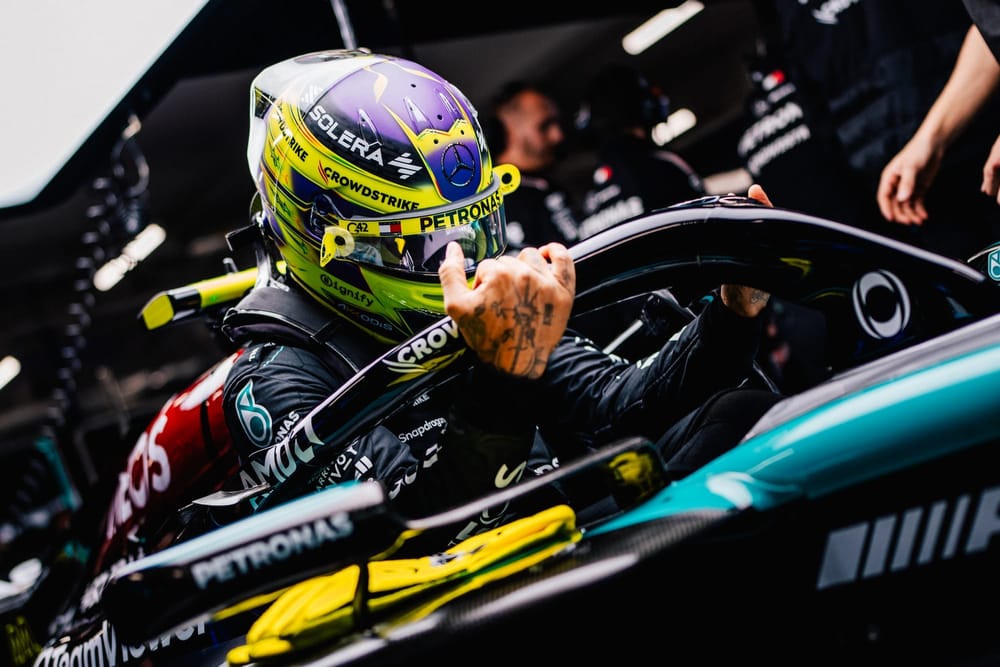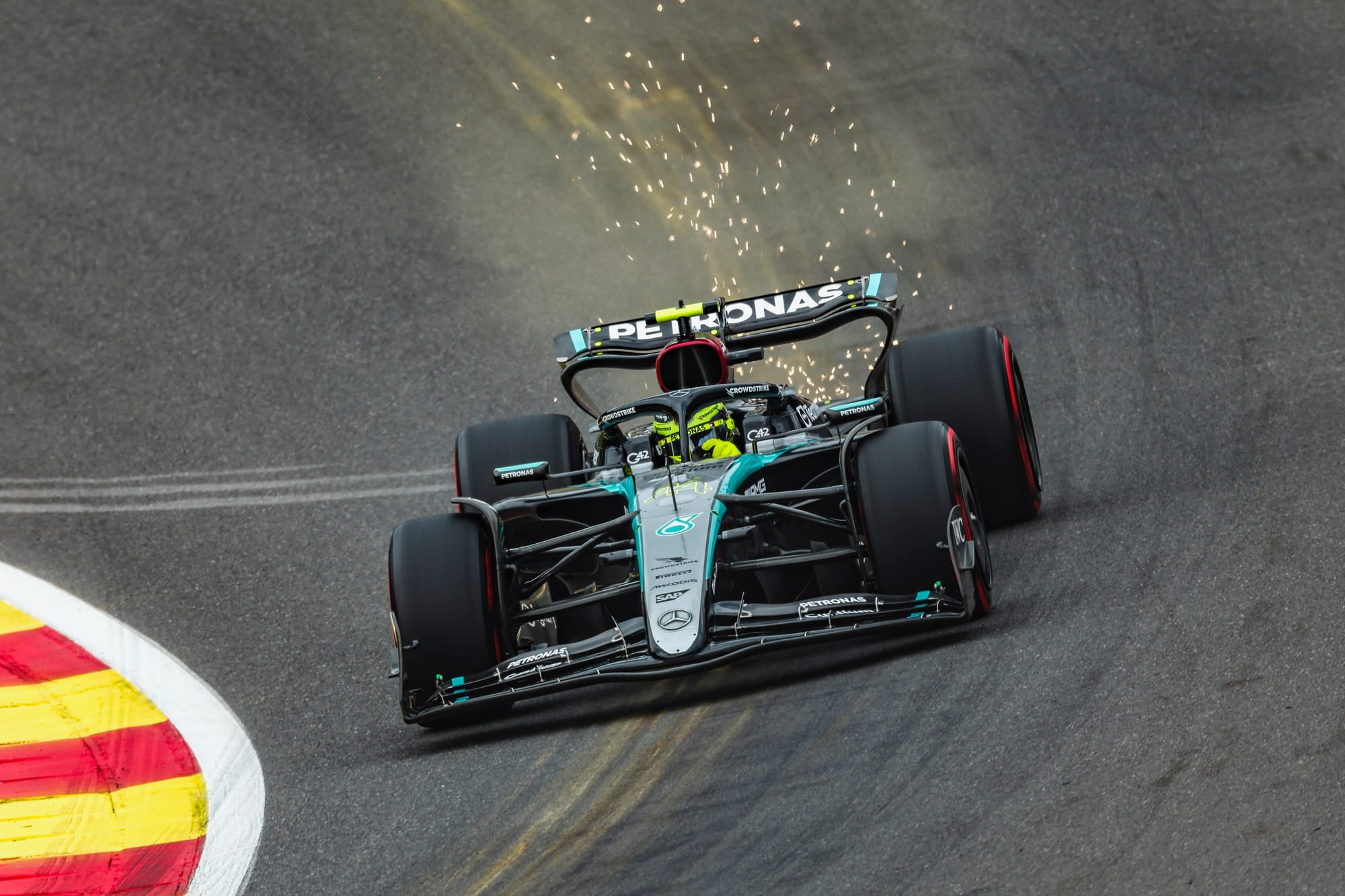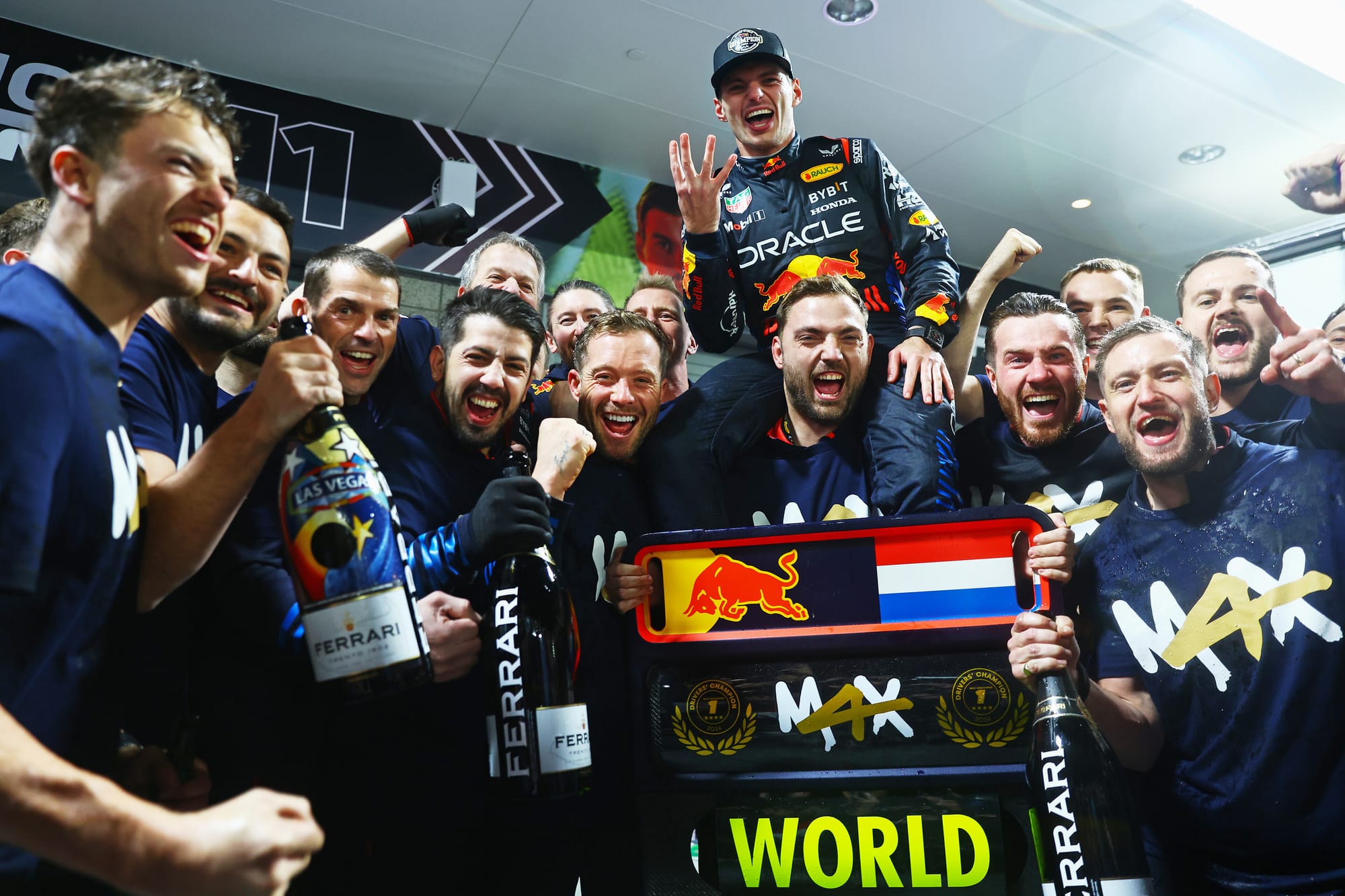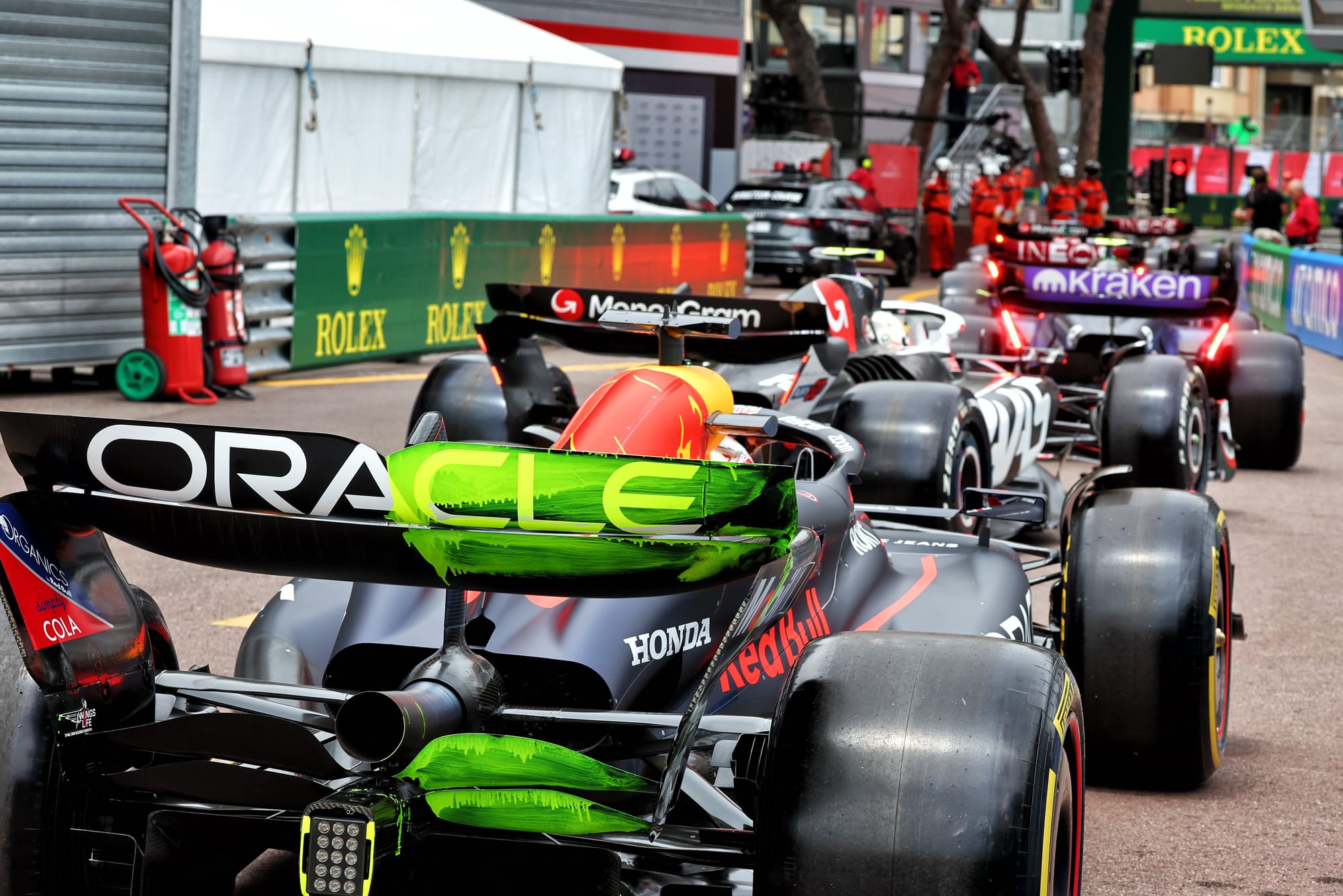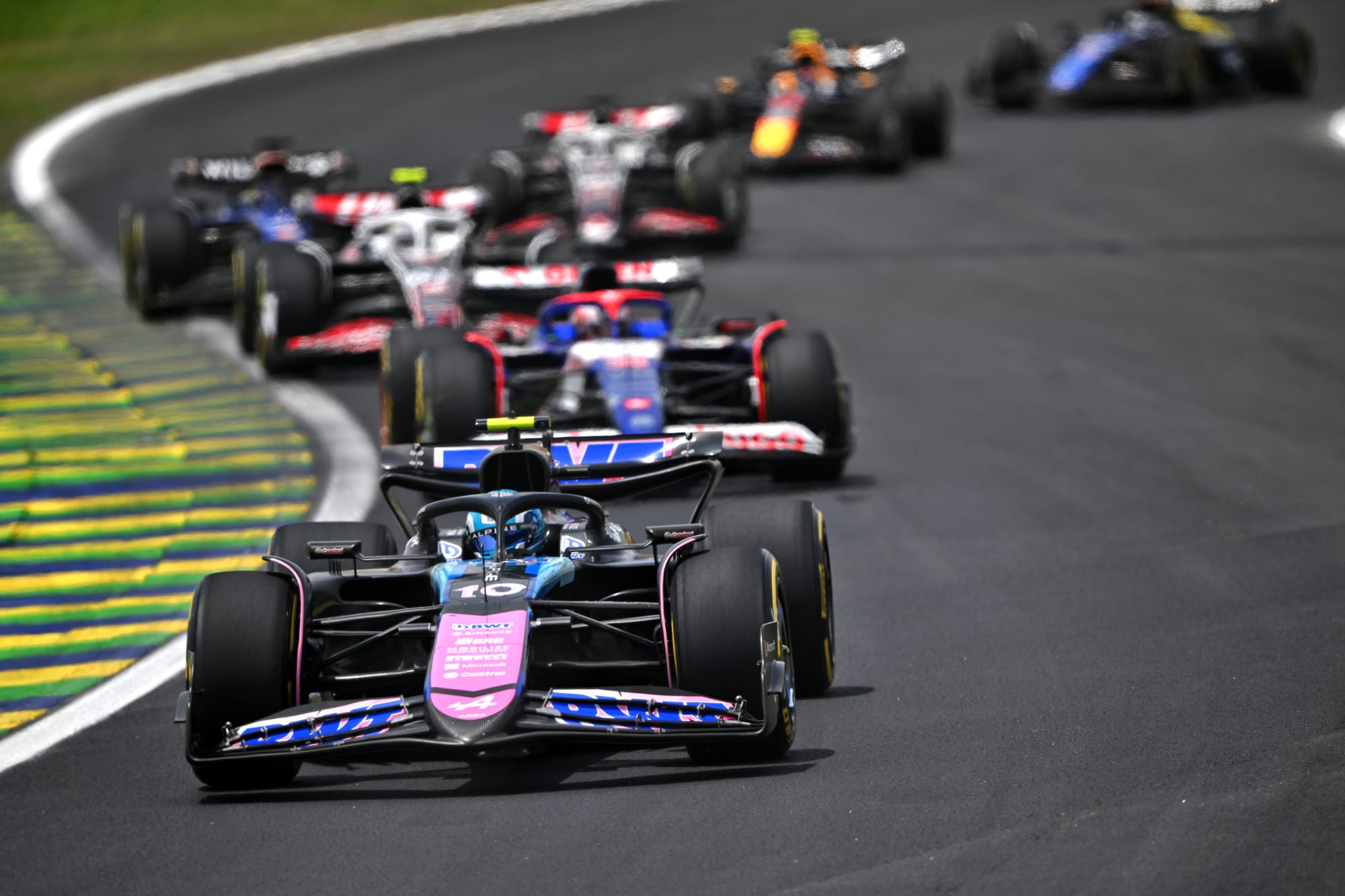Up Next

Drivers about to leave a Formula 1 team often find themselves feeling a bit isolated as the clock ticks down, especially if their relationship with the team has been difficult recently.
And even when things have largely gone well, as they have for Lewis Hamilton at Mercedes and Carlos Sainz at Ferrari, there can still be challenges.
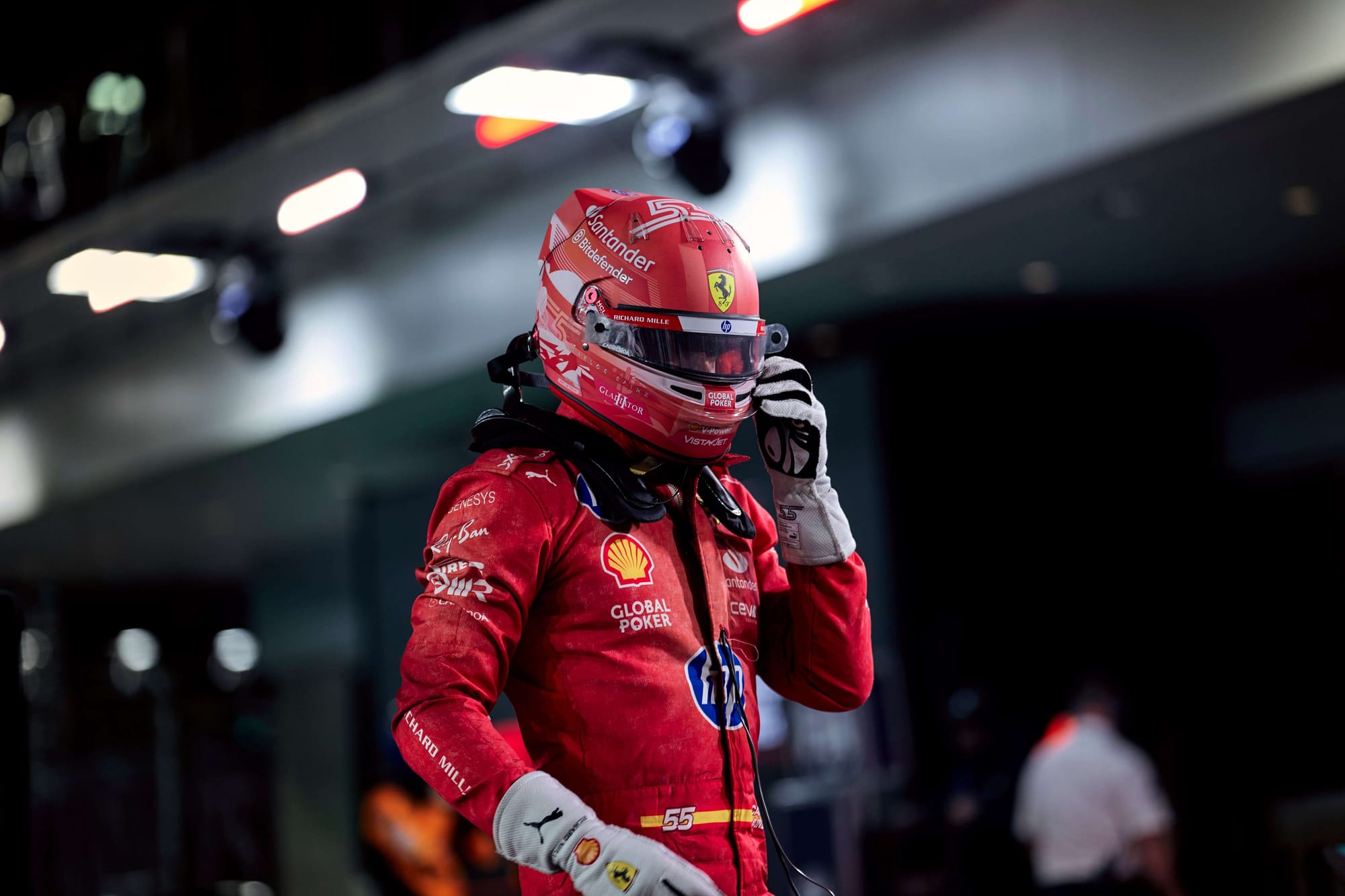
Sainz is starting to look a little crestfallen and despondent that he must shortly give up the most competitive F1 car of his career so far to Hamilton.
Perhaps Sainz's belligerent driving in the face of some Ferrari dilly dallying in Las Vegas, driving which so angered Charles Leclerc, was in part fuelled by Sainz feeling that, deep down, he doesn't deserve what Ferrari is about to do to him.
And he would be absolutely right to feel that way. Business is business, and we all know this sport can be cruel, but Sainz has also been an essential component of Ferrari's revival, yet shortly he must throw all that away and start again. It must be tough to take.
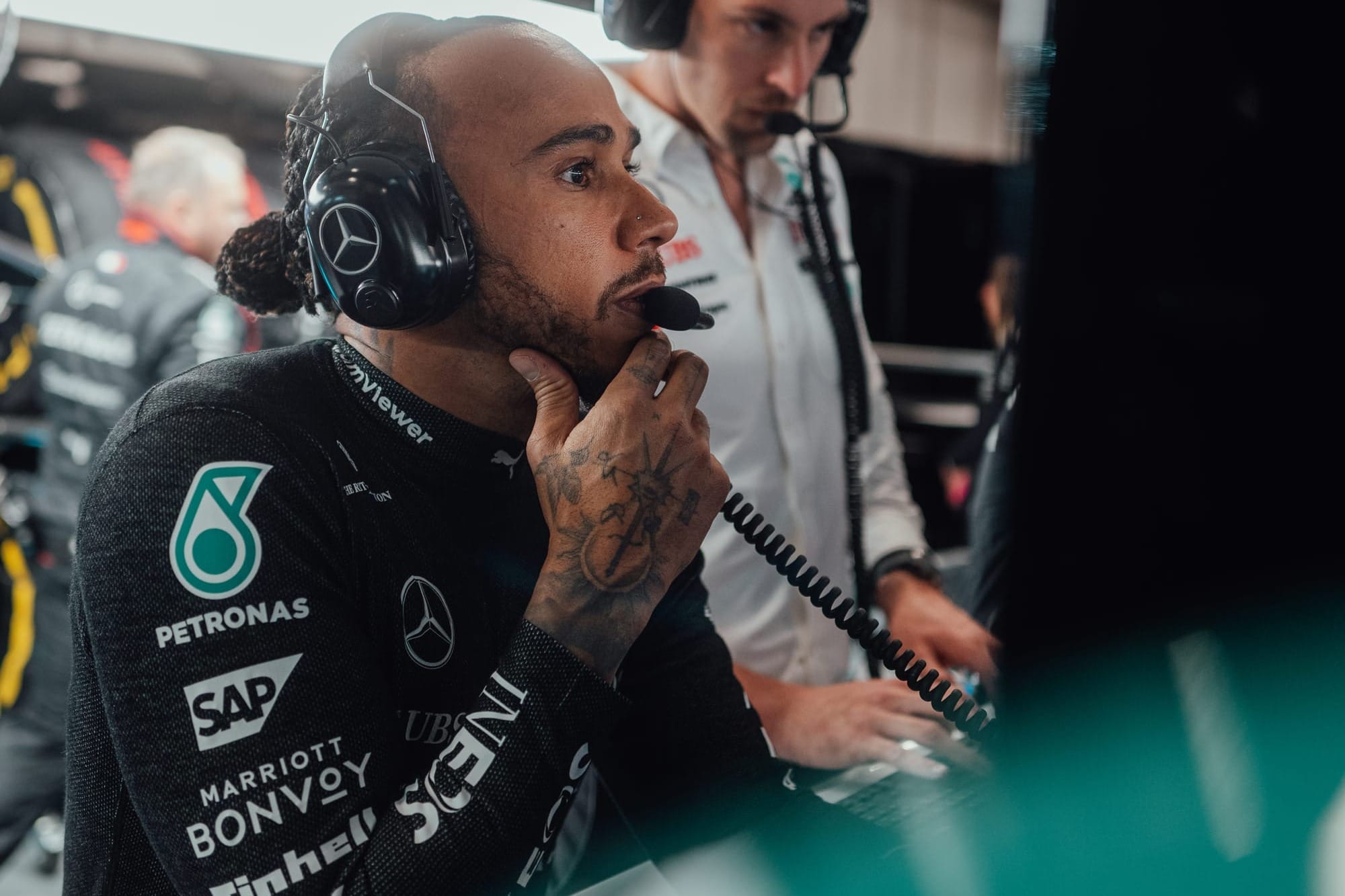
Hamilton meanwhile, has, at times, fanned the flames of conspiracy by vaguely suggesting there have been discrepancies between his and team-mate George Russell's cars in 2024.
He's never outright said he's not getting equal treatment but, as the qualifying defeats have mounted up, Hamilton's attempts to rationalise in the immediate aftermath have carried a certain air of slightly paranoid desperation.
When you say "one of the cars is working a lot better", as Hamilton did in Brazil, that's clearly a suggestion something on your car specifically is to blame for underperformance - and that something is not you.
Having spent time at the end of last season wondering if he genuinely still had what it took to perform at the highest level, Hamilton has clearly decided his driving is not the issue - even though the guy on the other side of the garage is somehow extracting more from what should be an identical car, within the bounds of normal set-up preferences and variations.
There has been a suggestion that Hamilton is trying to force these reluctant, understeer-y ground-effect cars to yield to his natural, ultra-dynamic driving style - where he dances on the edge of adhesion under braking and carries incredible corner entry momentum.
These cars appear to be so inherently unstable that often it seems the better way is, as Fernando Alonso has said, to drive at 90% because when you drive at the limit "everything falls apart".
But driving at 90% is not really in Hamilton's make-up - especially when it's time to lay everything on the line in Q3. He's hardwired to go for pole. There's a suggestion too that he has sometimes got himself lost down a few set-up rabbit holes this year, trying to chase something the car simply cannot give him.
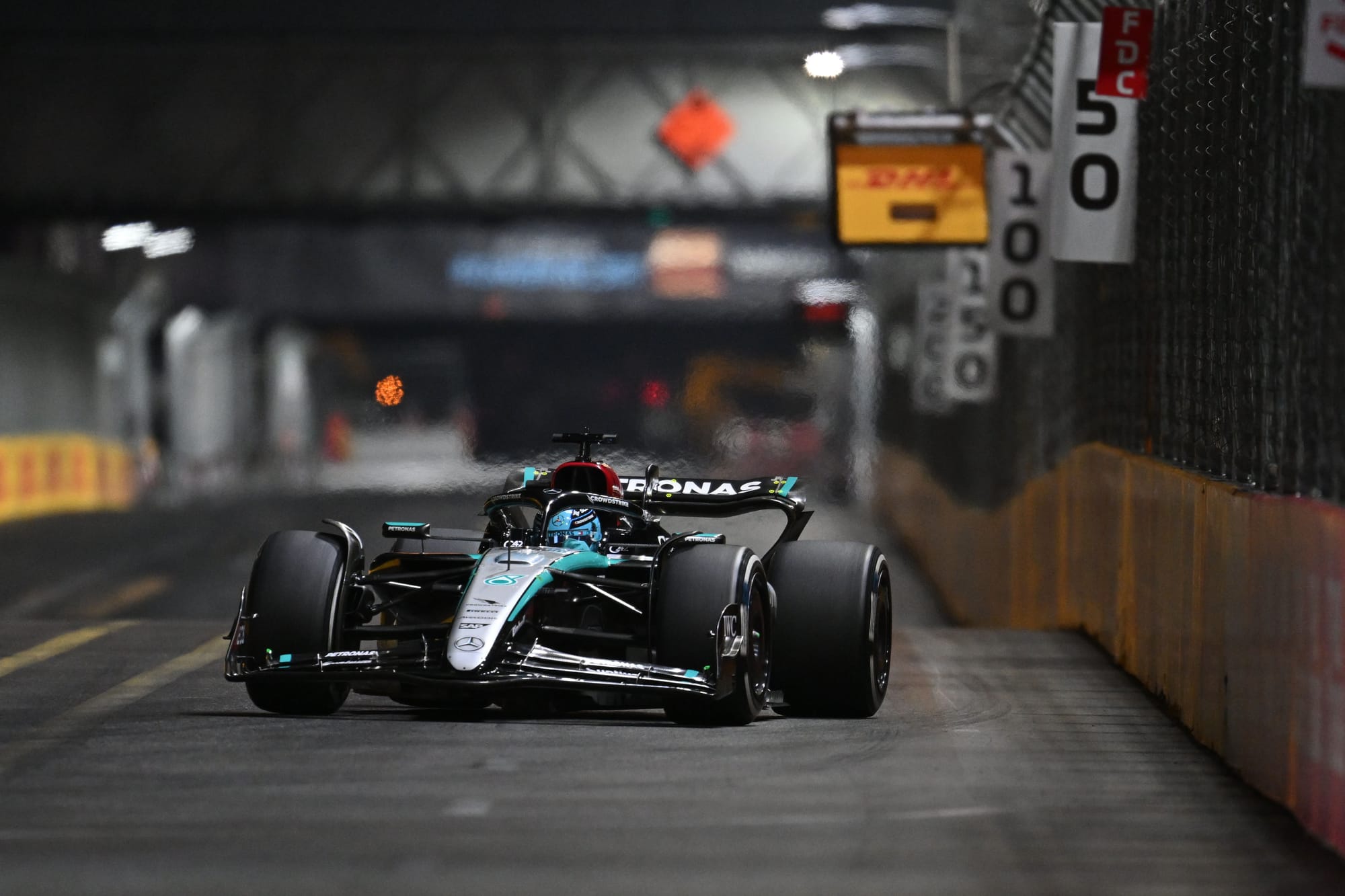
Perhaps Russell, who has always been a driver more preoccupied with through-corner balance, just naturally gels better with the way this generation of F1 cars like to be driven, whereas for Hamilton the process of adaptation has been more difficult, requiring more unpicking of habits that have been ingrained for much longer - and are more difficult to discard owing to the incredible success they have brought him.
The essential challenge of motorsport is knowing when you, as a driver, are the limiting factor and when it is actually the car that is holding you back. The line between those two things is often murky.
Sometimes it is clearer cut on one side or the other, but it is always easier to blame the car than yourself, and knowing when and how to look in the mirror requires serious levels of honesty and self-awareness - something McLaren team boss Andrea Stella says he admires in Lando Norris.
Stella says he feels "proud" of how quickly Norris learns and adapts himself when a new weakness is exposed - as has happened a few times during 2024's slightly bruising, one-sided title fight with Max Verstappen.
Interestingly, Stella worked with Alonso for a long time, at Ferrari and McLaren, and said back in 2015 he'd never encountered a driver so good at knowing how to judge that fault line between car and driver being the key component of underperformance.
A driver always blaming the car, rather than themselves, for underdelivering, can be incredibly tedious for an F1 team. But of course that's not the same as a driver feeling they are being actively sabotaged or held back.
We know favouritism does happen, particularly when teams are up against it - short of parts and maybe money too. Sometimes you simply have to pick a horse to back, and if that's not something pre-ordained contractually then there is always room for misunderstanding.
When drivers start to feel the other person is the one the team is gravitating towards, whether that be because of commercial or performance considerations, or simply because one driver is staying and the other is leaving, it can often lead to tension.
And drivers, being the incredibly outwardly self-confident beings that they are, can then sometimes start to see ghosts where no such ghosts exist.
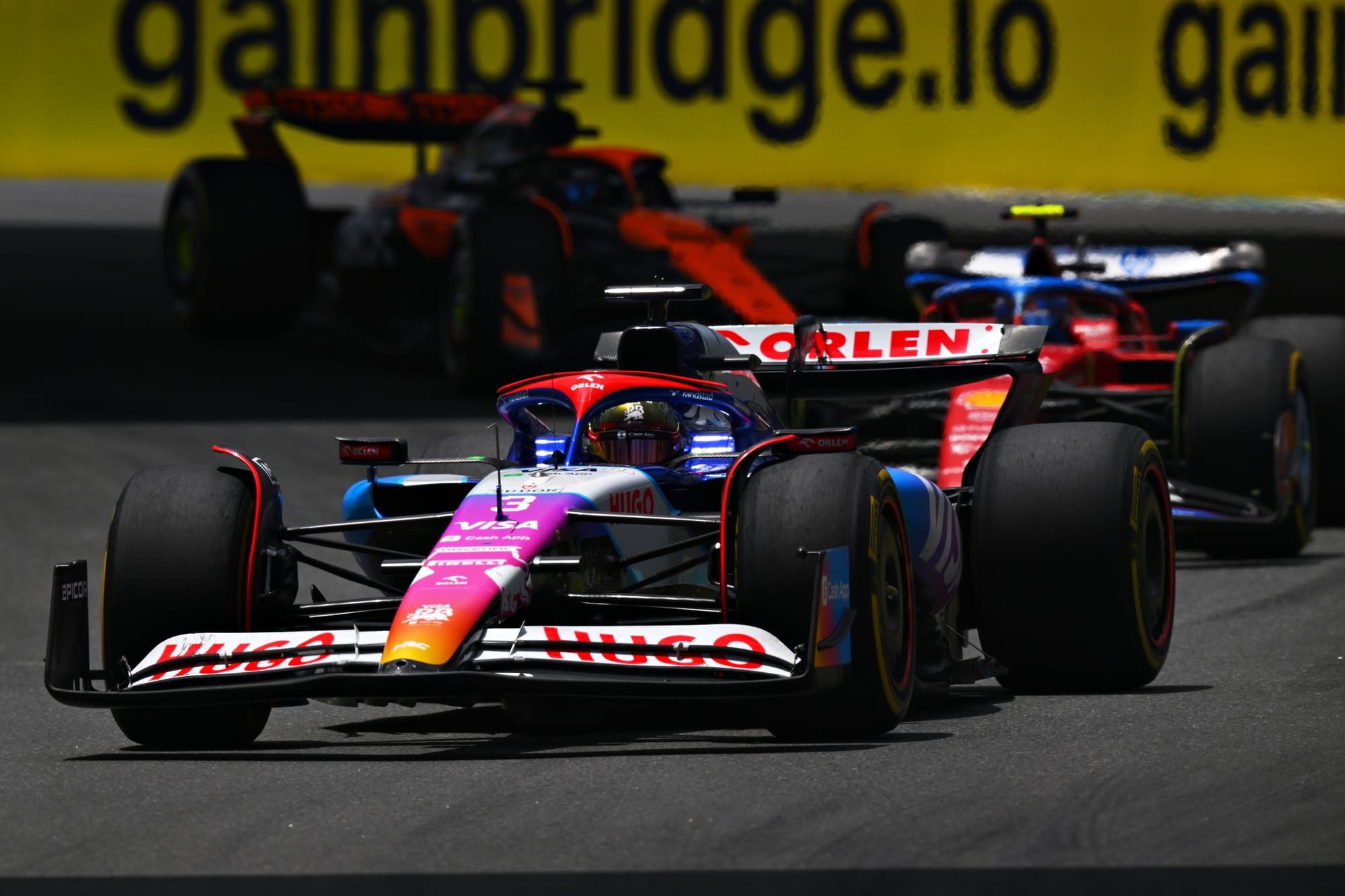
We saw Daniel Ricciardo demand and receive a chassis change at RB earlier this season, because he felt strongly it was the only way to eliminate doubt in his own mind that his qualifying deficit to Yuki Tsunoda was not down to his own driving but rather some kind of hidden car problem, perhaps a chassis crack.
The team could find nothing wrong with Ricciardo's original car, changed the chassis anyway at his request, and his performances then immediately improved. Whether this was actually because there was an undetected problem with the first chassis, or simply a psychological trick that freed Ricciardo's mind, remains unknown.
The mind plays tricks, especially when it doesn't want to face an uncomfortable truth.
Esteban Ocon is shortly to leave Alpine for Haas, and has complained since Alpine introduced a powerful upgrade first on Pierre Gasly's car for October's US Grand Prix, that he (Ocon) has been "missing between half a second and seven tenths" to his team-mate.
"We're trying to do our best with my side of the garage," Ocon added, "trying to figure out what issues there are with the car. [It's] difficult for us to carry the minimum speed and get out of corners, I just have a lot of wheelspin in comparison to Pierre."
This sounds like the classic under-rotation, whereby a driver is contained by a lack of confidence on corner entry, arrives at the corner too conservatively, with too much steering lock applied, and therefore picks up wheelspin from too much of that steering lock still being applied as they try to exit the turn.
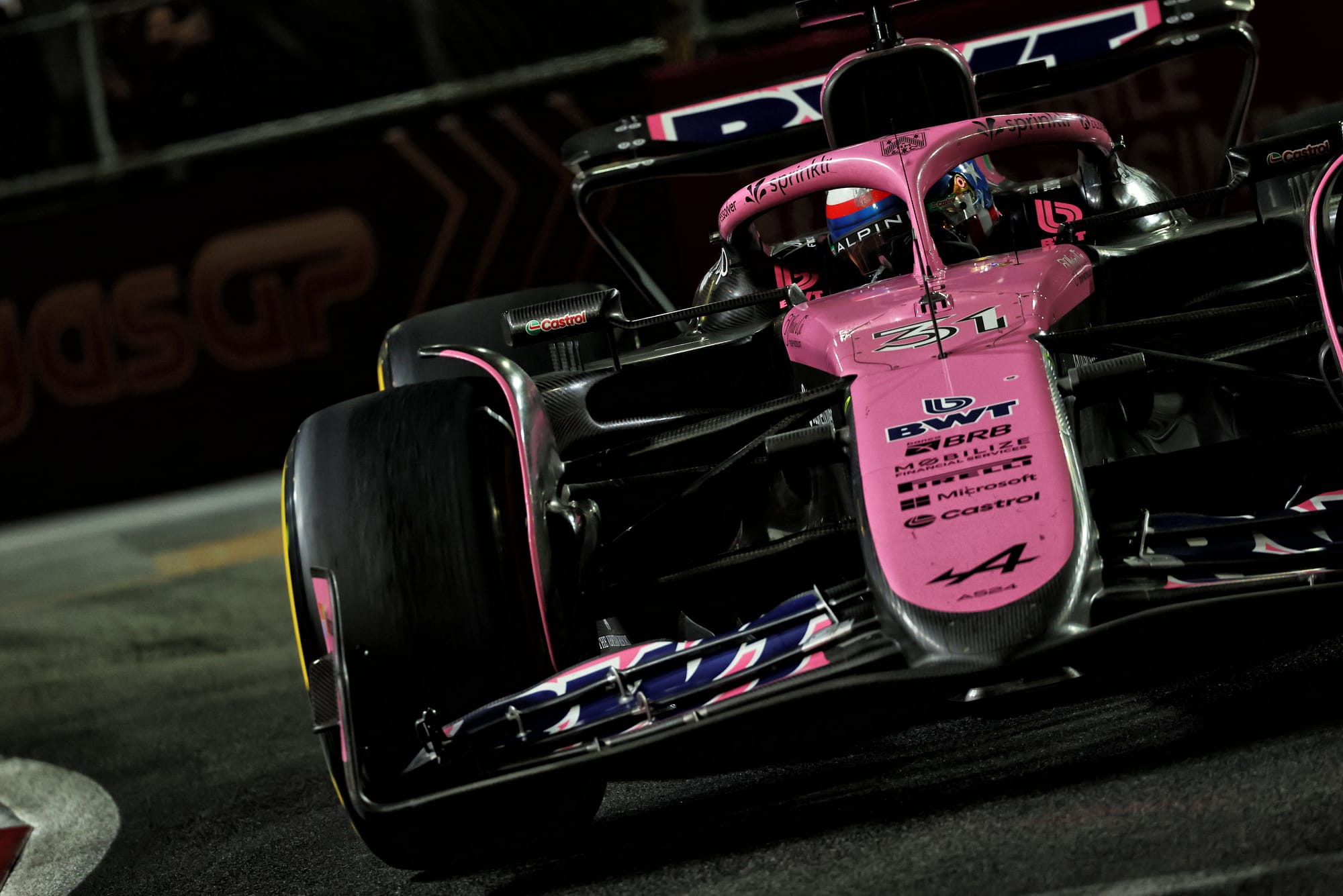
The Race's Edd Straw tried to question Ocon on this after the Las Vegas GP, but he remained adamant his driving is not the issue and that the car is somehow to blame.
Ocon doubled down, saying "one car, Pierre, was quick" and that "since Austin, unfortunately we are not fast". Ocon feels, if Alpine cannot correct this apparent discrepancy, it could "cost us in the championship as well".
When I asked him after qualifying in Las Vegas the day before if he felt he was being fairly treated by Alpine, given he's the one shortly heading for the exit door - and given relations have soured a bit since he clashed with Gasly in Monaco in May - Ocon replied: "I hope so. I spent five years with this team, giving it everything. I hope it's still the case."
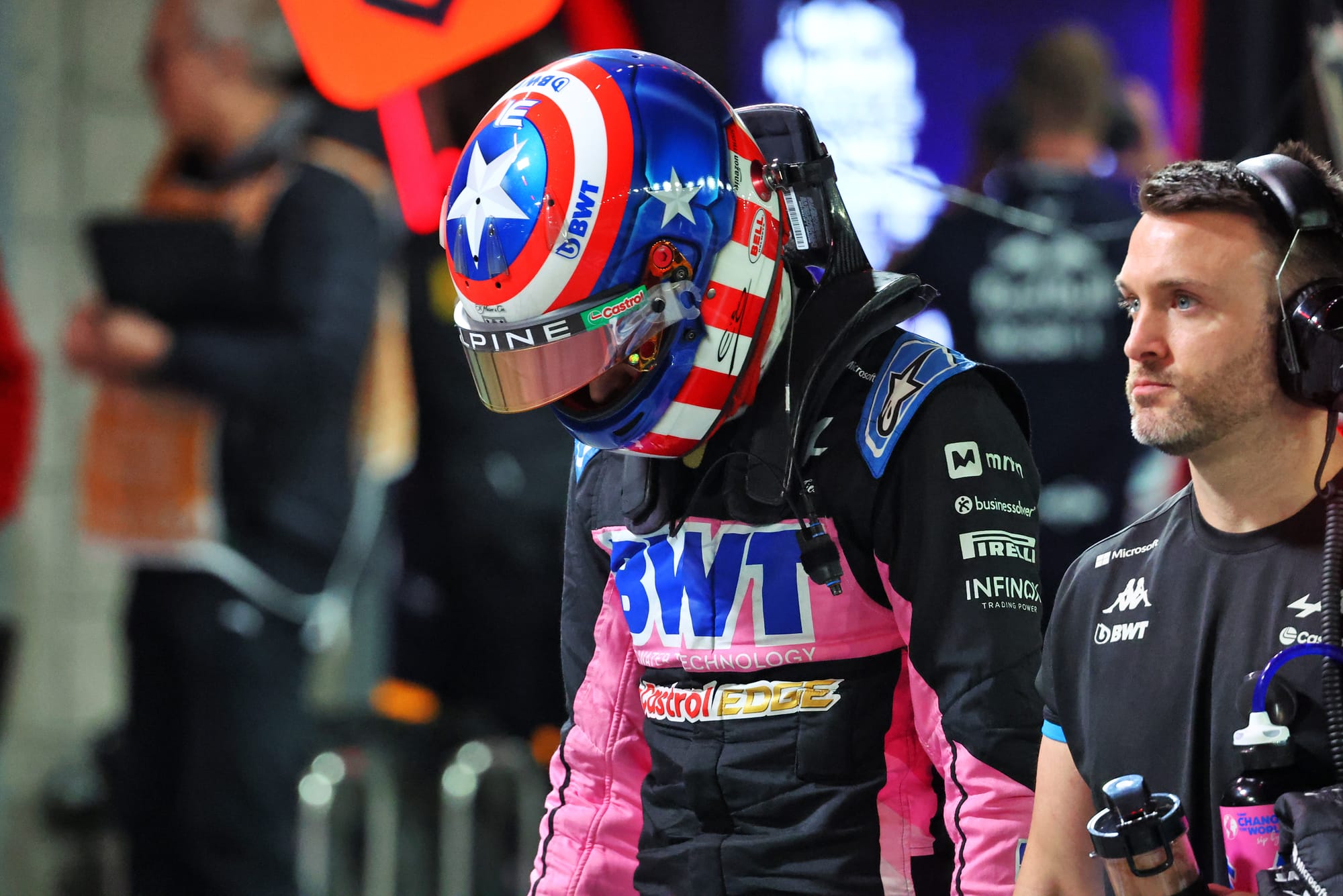
Sometimes it is true that the pattern of car development moves the performance window away from one driver's comfort zone. It could be that Alpine has delivered an upgrade that naturally, and not even necessarily deliberately, better suits Gasly's natural way of driving.
Gasly is known to be a driver who likes to brake late and hustle the car on corner entry. He has dialled this back a bit since his worst days at Red Bull, probably also because these cars don't respond especially well to that approach either. A driver's sensitivity to what the rear is doing, and how unstable they feel it is, will largely dictate what they are capable of extracting from the car.
One driver's understeer is another driver's perfect balance. When Romain Grosjean and Kevin Magnussen were Haas team-mates, it was often the case that what Grosjean would perceive to be an understeer limitation in the car - too much rear grip and not enough front - would be Magnussen's ideal balance.
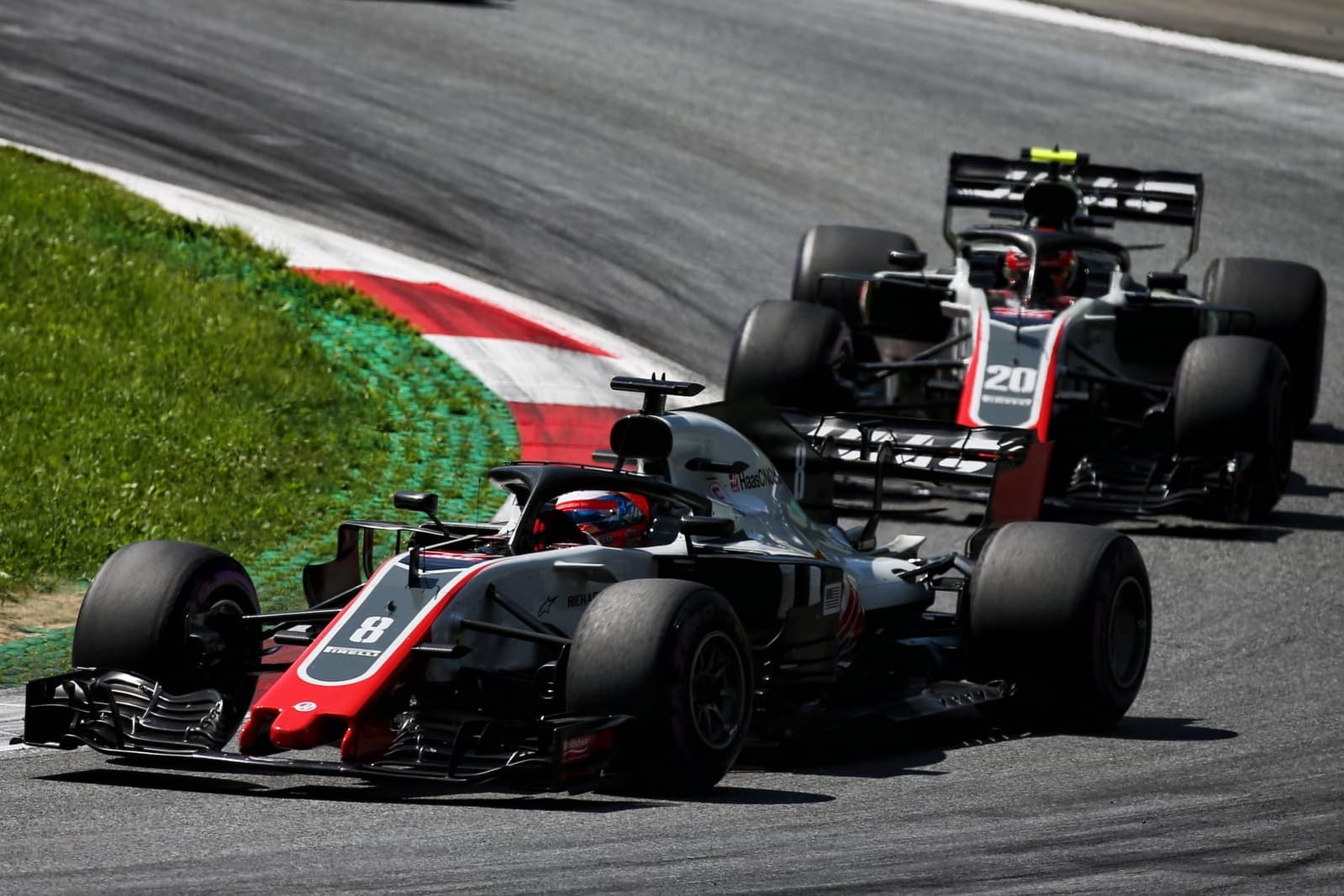
And it's just as true that one driver's oversteer can be another driver's perfect balance. When Red Bull suggested Sergio Perez change his car's front wing angle to reduce rear grip during qualifying for the 2022 Belgian GP, in order to close the gap to Verstappen in sector two, Perez replied that it was impossible for him to do so - because that would have created an instability at the rear in the high-speed corners that Perez simply could not deal with. For Verstappen, it was nothing.
Alpine has thoroughly checked Ocon's car and can find no fault. The feeling inside that team is that Ocon is struggling with rear instability on corner entry in qualifying that Gasly is exploiting - and rather than looking inwards, Ocon is blaming the car. The team feels his race pace is fine, perhaps even slightly stronger than Gasly's. And of course in the wet in Brazil Ocon was excellent.
Deliberately compromising Ocon in some way wouldn't make any sense for Alpine, which is embroiled in an incredibly tight fight for sixth in the constructors' championship with Haas and RB. There's just four points separating these three teams with two grands prix and a sprint race left to run in 2024.
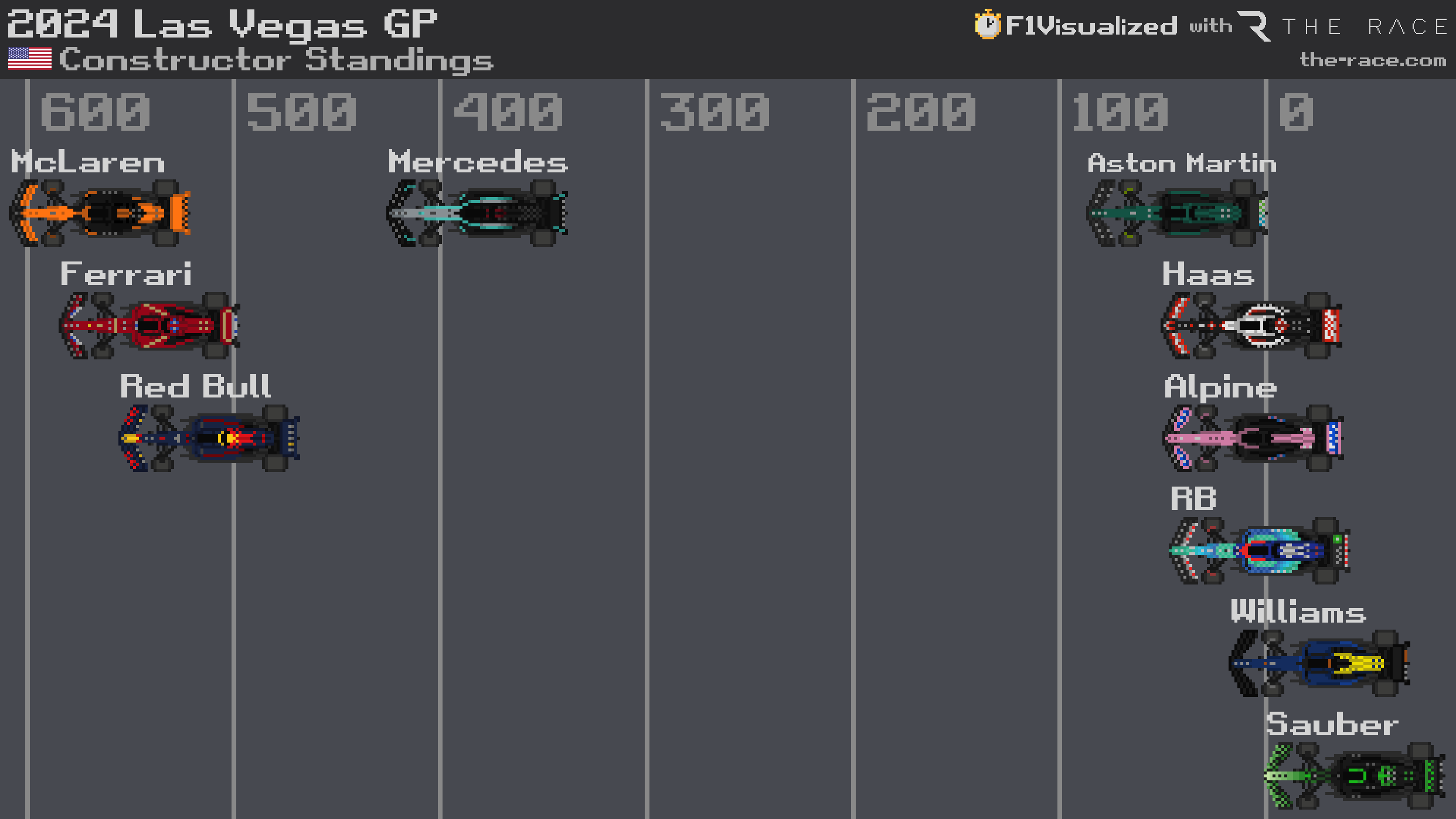
At times, Ocon has diverted away from Gasly's direction with the car, most likely in search of something similar to what Hamilton has hoped to unlock from his Mercedes, but Alpine team principal Ollie Oakes remains clear: "both cars are the same, they've both got the upgrade, it's just something we've got to keep looking into to make it more comfortable".
It can be mentally scrambling for a driver when performance ebbs away, or disappears suddenly - and the sort of unfavourable prevailing circumstances Ocon shares with Hamilton and Sainz - all drivers who are soon headed elsewhere and who are, for different reasons, not particularly happy about their current circumstances - can create a sense of paranoia that is ultimately self-defeating.
The key is to not let it eat away at you, and learn instead the self-awareness to take a long hard look in the mirror first.


